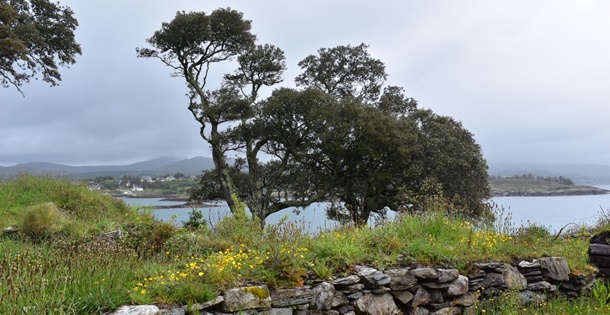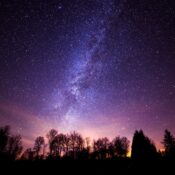Steve Slon attends a conference of travel writers in Ireland and does a little sightseeing, as well. See the entire series.
Day 4: Cork
For the next few days we will be traveling south and west along what’s known as the Wild Atlantic Way. It’s a tourism trail that meanders along the coastline, marked by signs with an up-and-down zigzag pattern that looks a bit like waves if you look at it one way and a bit like what WAW would look like if you joined the letters together and eliminated the crossbar line from the A.

The landscape changes as we roll from Kilkenny down through Tipperary toward Cork, with hedgerows giving way to stonewalls.
On to the city of Cork.
Cork is a port town, famous for being the last port made by the Titanic before its fateful journey.
Cork has a museum of butter, where apparently there’s a sample of a 1000-year-old slab of butter. We didn’t get to experience this museum, unfortunately.
Fun fact: One thinks of Guinness as being the national beverage of Ireland. In fact, it’s more of a Dublin thing. Here in the south, those from Cork drink Murphy’s stout. Kinda violation of the local ethos to order a Guinness.
Stopped in Glengariff on the coast, where we boarded a ferry to Garinish Island.

The island was privately held until being bequeathed to the Irish people in 1953. Beautiful Italian garden by Annan Bryce and Harold Peto, the famous garden designer.

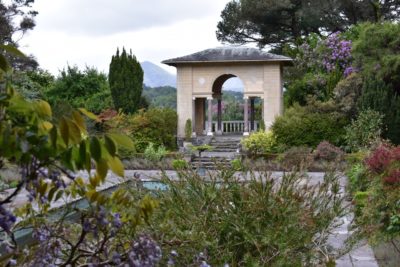
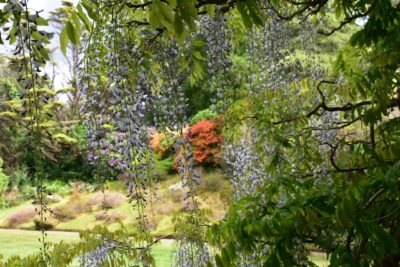
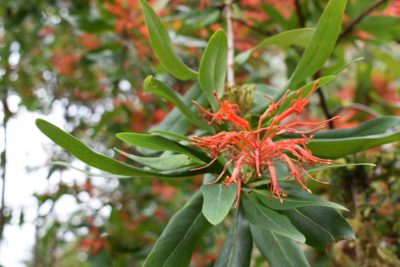
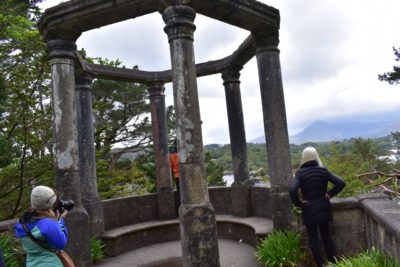
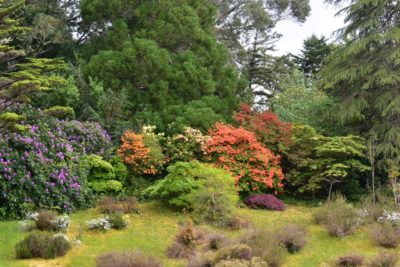

Sea lions lazed on the rocks on this little outcrop of Garinish Island.

We spend the night at the Beara Coast Hotel in Castletownbere, where our room has a wonderful view of the harbor.
My dinner companion is Don Dowling, who does some independent work as a travel guide, but for this trip is our bus driver. Over the course of the meal, Don regales me with quotations from Sherwood Anderson, Yeats, and a little bit of Shakespeare. I’m humbled as much by his power of memory as by his intelligence and erudition.
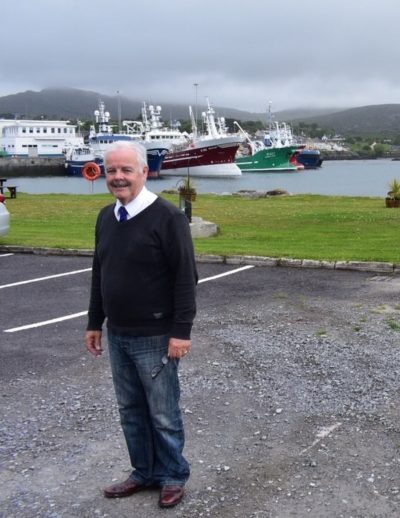
Day 5: Ring of Kerry
Joined by local guide Paddy O’Sullivan, who speaks in a thick Cork accent that’s a bit hard to understand, we take a gentle walk on Beara Peninsula, stopping at the ruins of Donboy Castle, dating to 1200.


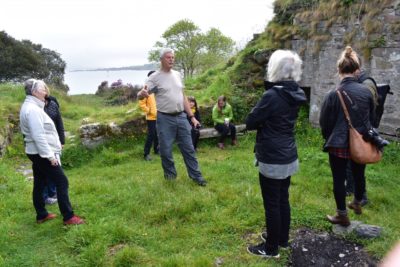
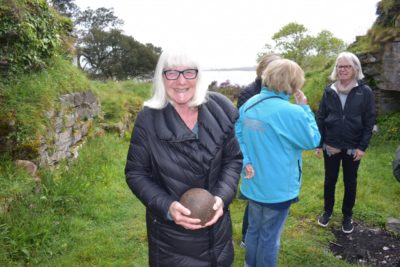
In the afternoon, drive part of the beautiful Ring of Kerry. The sun has broken through and we stop at a lookout point called “Ladies View.” The name comes from the visit made by Queen Victoria in 1861 with full royal retinue. Her ladies in waiting scouted the area for appropriate places for the Queen to enjoy, and they were so taken with this location that it evermore bore the name “Ladies View.” The region was practically bankrupted by the Queen’s visit, since it took a small army to move her around as she brought not only clothing but furniture she was accustomed to wherever she traveled.

In the afternoon, we stop at a small museum dedicated to Skellig Michael, a rocky island eight miles offshore where early Christian monks created austere living quarters 1400 years ago. The museum is on the mainland and sells tickets for the boat ride to the island, weather permitting. We don’t have time to make the journey, but doubt it would have been possible, thanks to rain and fog. Skellig Michael is popular with Star Wars fans, as it was the site of the final scene in the 2015 movie The Force Awakens, and will continue to have a role in the 2018 release, The Last Jedi.
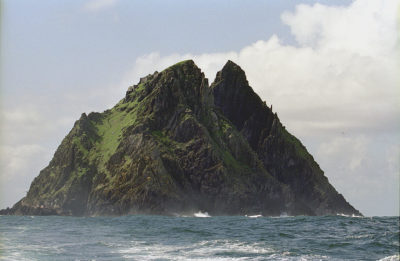
Our after-dinner talk is with astronomer Steve Lynott about the Kerry Dark Sky experience. The International Dark-Sky Association (bet you didn’t know there was such a thing) has designated the Kerry region of Ireland as one of only three “Dark Sky Reserves” on the planet—places where there is very little artificial light messing with your ability to see stars. On a clear night, the view here is stunning. Or so we are told. It’s been cloudy for past few days, so we don’t get to witness the night sky firsthand, but the subject of light pollution is an important one. I learned from Lynott that when you have been exposed to normal electric lighting, it takes your eyes more than 20 minutes to see in the dark. Red light doesn’t have the same effect. So, next time you go sky gazing, screw a red light bulb into your flashlight, Lynott says.
Day 6: Valentia Island
A gentle walk along the shore on Valentia island. The name suggests Spanish origin, but in fact the word derives from the the Irish word Beal Inse (which translates as “Island in the mouth of the sound.”) Our walk takes us up a long gradual rise where there are reputed to be great views of the Skellig Islands, but we’re all fogged in. An eerie, otherworldly mist surrounds us. No ocean view today, but a pleasant feeling to be walking near the shore with only the sounds of sea birds and gentle lapping of the waves to tell us where we are.


Afterwards, a visit to an ice cream stand connected to a small dairy farm of about 100 cows.

The farmer scornfully says most commercial ice cream relies too much on skim milk; says he throws out the skim and uses only the rich cream. His cows are outdoors almost all the time, grazing on grass. The ice cream is out of this world.
That evening, arrive in Dingle, driving down roads so narrow our bus has to pull over and stop to allow cars to pass in the opposite direction.
Dingle is a quaint tourist town that has remade itself as a foodie destination. After checking out local crafts (some very fine weavings) and some touristy junk, we grab a beer at Foxy John’s, a hardware store/pub where, at 6 p.m., the music starts playing.
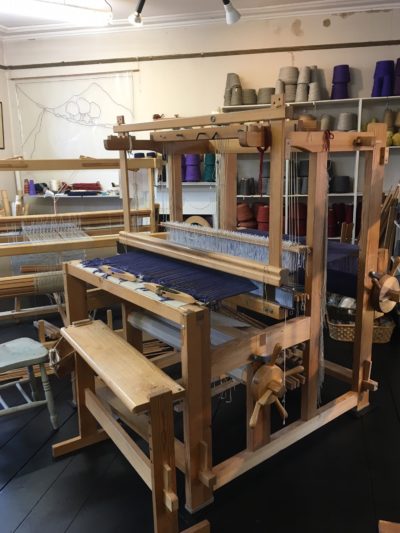

Afterwards, dinner at Global Village, a Michelin recommended restaurant right across from Foxy’s. The food is not at all like the hearty Irish fare one expects in these parts. Rather it’s the delicate, carefully sauced, small-portioned, type of eats one associates with the continent. Did that sound snarky? I didn’t mean it to. The food was delicious.
Become a Saturday Evening Post member and enjoy unlimited access. Subscribe now
